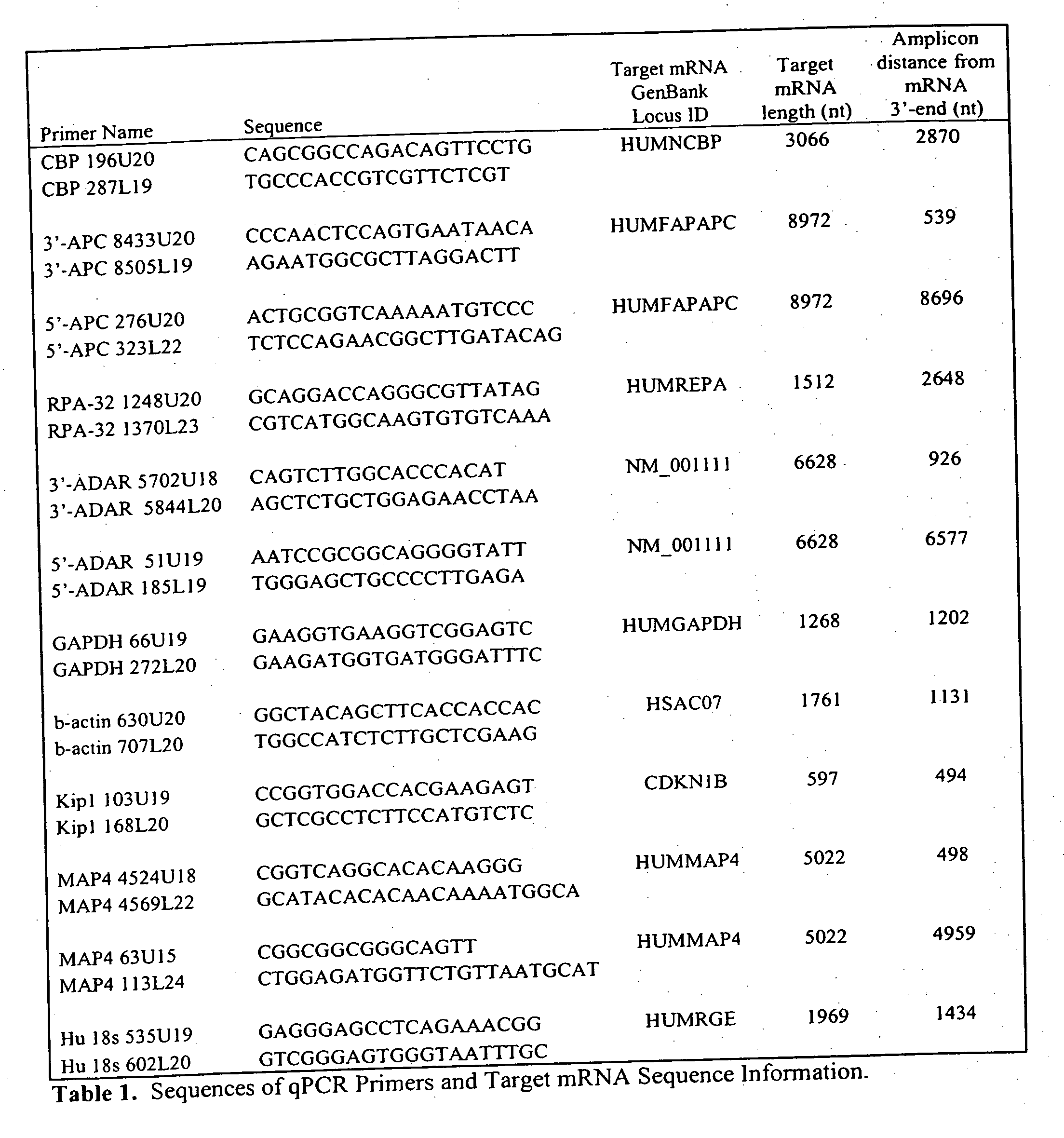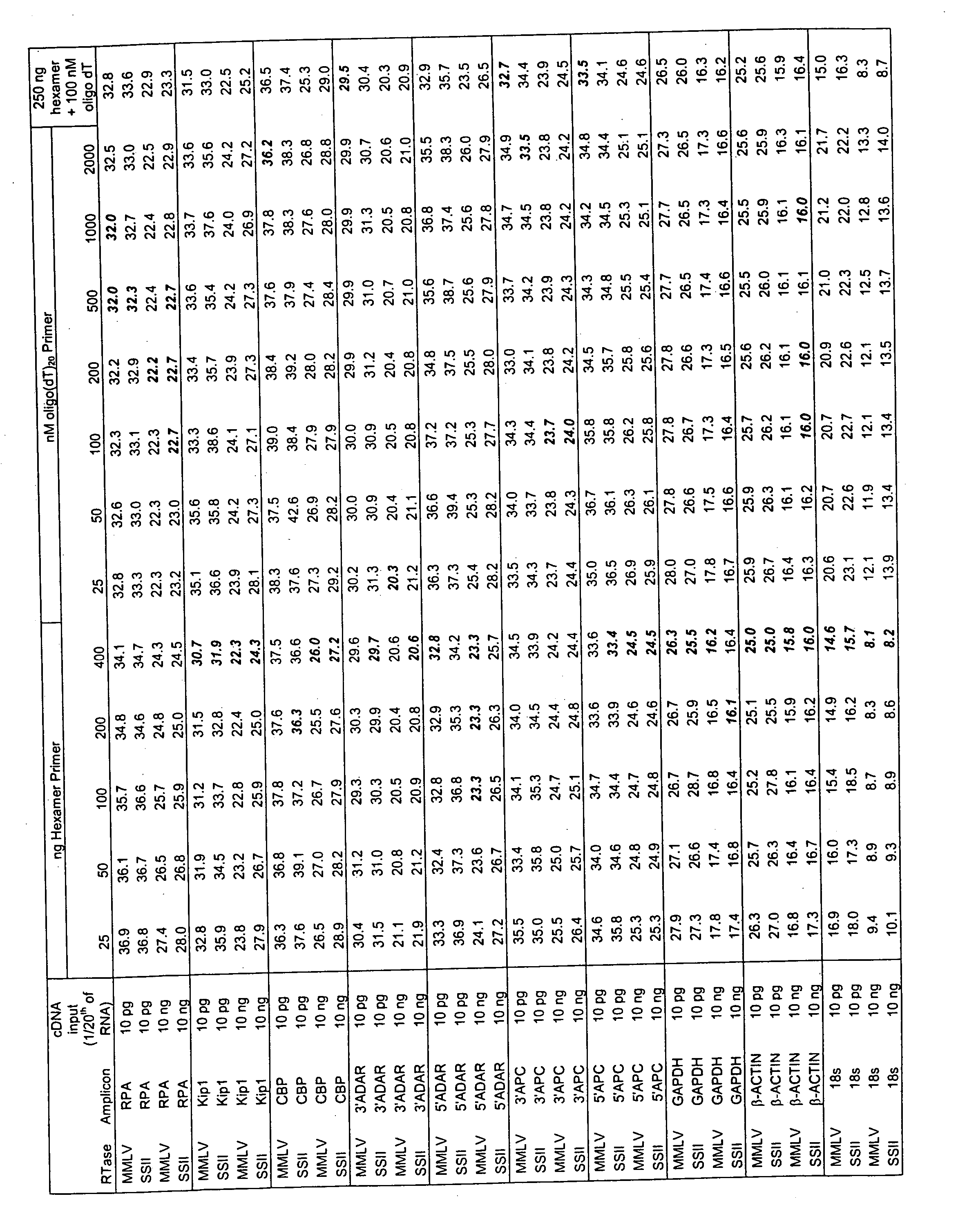Compositions and methods for cDNA synthesis
a synthesis and composition technology, applied in the field of compositions for preparing cdna, can solve the problems of metabolic pathways, limitations of current methods for accurate quantification, and the limitations of the process of reverse transcription, so as to reduce rna sequence bias, improve priming, and increase the total amount of cdna produced
- Summary
- Abstract
- Description
- Claims
- Application Information
AI Technical Summary
Benefits of technology
Problems solved by technology
Method used
Image
Examples
Embodiment Construction
[0034] Surprisingly, it has been have found that by varying the concentration and ratios of oligo dT and random primers, efficiency of cDNA synthesis and uniform representation of mRNA sequences can be vastly improved. These improvements were realized using a fixed quantity of an oligo(dT) and random primer mixture over a wide range of starting RNA template amounts. Even though the ratio of primer to mRNA varied over 6 orders of magnitude, both the relative and absolute representation of mRNA sequence was maintained in the cDNA. In contrast to findings of earlier studies, it has been surprisingly discovered that even when using wild type reverse transcriptases with full RNase H activity, sensitivity of detection can be improved due to better and more efficient conversion of mRNA into cDNA.
[0035] An additional surprising discovery is that improved reaction conditions for cDNA synthesis can be obtained through the inclusion of an effective amount of a lithium salt in the reaction mix...
PUM
| Property | Measurement | Unit |
|---|---|---|
| concentration | aaaaa | aaaaa |
| concentration | aaaaa | aaaaa |
| concentration | aaaaa | aaaaa |
Abstract
Description
Claims
Application Information
 Login to View More
Login to View More - R&D
- Intellectual Property
- Life Sciences
- Materials
- Tech Scout
- Unparalleled Data Quality
- Higher Quality Content
- 60% Fewer Hallucinations
Browse by: Latest US Patents, China's latest patents, Technical Efficacy Thesaurus, Application Domain, Technology Topic, Popular Technical Reports.
© 2025 PatSnap. All rights reserved.Legal|Privacy policy|Modern Slavery Act Transparency Statement|Sitemap|About US| Contact US: help@patsnap.com



